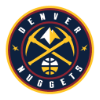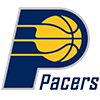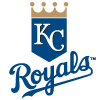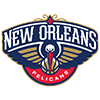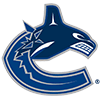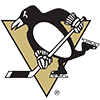Best ball is a natural fit for fantasy football players, as the scoring system can remain identical to traditional season-long leagues. For fantasy baseball purists, the shift from 5X5 scoring to points isn't such a simple transition. However, the unique scoring offers players in the format (scoring depend) to pass on headache-inducing positions such as catcher or from chasing the increasingly frustrating saves category. There's also plenty of space for advanced metrics and nuanced strategy, as wOBA is a particularly important stat in best-ball formats and supplants traditional metrics such as batting average and on-base percentage as the best way to identify potential buying opportunities.
I recently participated in a $5 tournament entry on Underdog Fantasy and will use my process leading up to and during the draft as a primer for best-ball contests on the site as we near Opening Day.
Getting Familiar with the Format
The first step to winning any league is becoming very familiar with the rules and scoring. For this particular site, each roster will be filled with the top-three scoring infielders, outfielders and pitchers. In addition to the starting nine, there are nine bench spots. The generality of the positions leads to unique valuation, and allows participants to immediately cross off a number of players from the pool.
Takeaway No. 1: Don't draft catchers. Because positions aren't broken down, catchers don't carry nearly the same amount of value as in traditional leagues that require either one or two players from the position. This was evident from looking at the rankings, as no catcher was projected inside the top-100 hitters, and J.T. Realmuto and Yasmani Grandal were the only players at the position inside the top 150. Realmuto and Grandal were the only catchers selected in my draft.
Another quirk to the format is that there is no specific relief pitcher roster spot, and saves are not rewarded any points.
Takeaway No. 2: Closers and traditional relief pitchers are worthless. The top relief pitcher by projection is Ryan Yarbrough, who is the 91st overall pitcher and is projected to throw 150 innings — far more than any traditional reliever. Edwin Diaz is the highest projected closer and ranked as the 156th highest-scoring pitcher.
For hitters, negative events such as outs, strikeouts and caught stealing are not penalized with negative points.
Takeaway No. 3: When evaluating hitters, volume can offset skill. This isn't to say that elite players like Mookie Betts or Ronald Acuna won't remain elite in the format. But, what it does mean is that players locked into a leadoff or top-of-the-order role have the chance to outpace more skilled players. Another tiebreaker to consider when evaluating players is the strength of their team's lineup, as the more times a lineup turns over, the more plate appearances a player has. The more plate appearances a player has, the more opportunity they have to accrue points without the downside of losing them.
Underdog awards progressive points for base hits, beginning at 3.0 points for a single and progressing to 6.0 for a double, 8.0 for a triple and finally with 10.0 for a home run.
Takeaway No. 4: Metrics weighted to reward extra-base hits are a better way to evaluate hitters over traditional statistics such as batting average and on-base percentage. Understanding which players project well in metrics such as wOBA and ISO are likely to project well in this format. Freddie Freeman is a perfect example, as he's a late first- or early second-round pick in 5X5 formats. Yet, in RotoWire's Underdog projections he is the second-highest point scoring player. Looking at Steamer's projected wOBA leaderboard for the season reveals that Freeman is projected for third-highest wOBA behind only Juan Soto and Mike Trout. While still not a perfect way to evaluate players due it's lack of incorporation of stolen bases, wOBA is a strong starting point for player evaluation.
Projections + Strategy
After learning what went into the projections, it was time to familiarize myself with the player pool. As is the case across most best-ball formats, hitters are uniformly projected to score more points than pitchers. In this instance, the gap was roughly 300 points between the most elite hitters and the most elite pitchers across an entire season.
Despite the gap in overall points, three pitchers separated themselves as elite at the position. Gerrit Cole, Shane Bieber and Jacob deGrom were the only pitchers projected for more than 1,400 points, with Aaron Nola the only other pitcher projected to tally at least 1,300 points.
There was a similar tier at the top of the infield pool. Although Freddie Freeman blends in among the other elite hitters, he stands out among his peers in the infield. Freeman is projected to score 1,787 points with Fernando Tatis — the next-highest projected point earner — as the sixth-best hitter but with 119 fewer points.
At the very top of the pool, outfielders were projected to produce similar amounts of points relative to each other. Given the skills of Juan Soto, Mookie Betts, Ronald Acuna, Mike Trout and Christian Yelich and Bryce Harper, this likely isn't a big surprise. All told, Soto is the top projected overall player with 1,790 points, but the gap to Harper — the lowest projected player among the group — is only 188 points. Thus, there's a steadier decline among elite outfield options as compared to the infield.
However, that phenomenon flips just outside the top-10 projected players. Six of the top nine highest-projected points earners are outfielders. However, only five additional outfielders appear between the 10th- and 30th-highest projected players, meaning there's a steep decline after the elite tier at the position. Contrarily, there are 15 infielders projected to land in that same span.
After going through this exercise, in order of preference, I'd want my first-round pick to be one of the three elite starting pitchers, Freddie Freeman or any of the remaining six elite outfielders.
My Draft
I drew the 10th pick in the draft. After each of the first four picks were the elite outfielders, I had my hopes high for either Freeman or one of the trio of ace pitchers. Alas, my dreams were dashed when the aces flew off the board and when Freeman went with the ninth pick. I was forced to pivot to a not-so-bad consolation of Yelich.
As for my overall build, I chose six outfielders, five infielders and seven pitchers. The league's hitter/pitcher split was similar, as one team each drafted six and eight pitchers, four teams selected seven pitchers and five teams selected six pitchers.
Here's how my final roster shaped up by position with the each player's draft position and some thoughts and logic behind the picks:
Infielders: Xander Bogaerts (3.10), Cavan Biggio (6.03), Carlos Santana (9.10), Dansby Swanson (12.3), Cesar Hernandez (18.3)
Bogaerts and Swanson: Both players were solid in terms of their projection versus cost where selected in the draft. Both have locked in playing time, with Swanson having the chance of also occupying a premium lineup spot throughout the season.
Biggio, Santana, Hernandez: Based on projections, this trio of players stood out as being drafted too low by their ADP. Biggio presented the biggest opportunity for speculative value, as he projects to be the 16th-highest scoring player among both hitters and pitchers, yet has an ADP of 85.3. My selection of him at pick 63 may stand out as a reach, but I didn't draft again until pick 82 and didn't want to miss on the potential profit. Meanwhile, Santana projects to be the 41st most valuable player, so I was once again happy to reach on him at pick 106 (ADP 135.6) to ensure he landed on my roster. While his projected .231 batting average would be a lag on a roto roster, his career 15.5 percent walk rate and .352 wOBA vault his value in this format.
Hernandez doesn't have an ADP on Underdog, so perhaps I went off the board with this pick. The expectation is that he will lead off in Cleveland, however, batting directly in front of quality hitters like Jose Ramirez and Eddie Rosario.
Outfielders: Christian Yelich (1.10), Charlie Blackmon (5.10), Austin Meadows (7.10), Lourdes Gurriel Jr. (10.03), Leody Taveras (16.03), Jackie Bradley Jr. (17.10)
Yelich: Yelich was the fifth of the top-six outfielders referenced earlier, so while I was disappointed to miss on an ace or Freeman, I got my next best option.
Blackmon: Blackmon has started to show signs of decline but is locked into a premium lineup spot and has the chance to produce monster points during weeks when he has several home games.
Meadows, Gurriel: Meadows had a down season in 2020, but was diagnosed with COVID-19 early on and might not have fully recovered. Heading into what should be a bounce-back season, he's projected to be the 29th-highest scoring player, yet has an ADP of 87.3. He fits many of the criteria discussed in the strategy section, as he should lead off for the Rays against right-handed pitching all season.
Gurriel won't have the same benefit of lineup positioning due to the addition of George Springer, yet his projections still reflect that his ADP leaves a solid chance that he is undervalued. He comes in as the 54th overall projected player with an ADP of 109.6.
Taveras, Hernandez: Taveras also projects to lead off for the Rangers against right-handed pitching, making him a prime target. His speed is also a positive. There's risk that his strong 2020 showing was on the basis of a small sample, but that late in the draft he has the potential to rack up points as a late-round selection..
Pitchers: Aaron Nola (2.03), Zac Gallen (4.03), Kyle Hendricks (8.03), Zach Eflin (11.10), Sandy Alcantara (13.10), Marco Gonzales (14.03), Chris Bassitt (15.10)
There were a number of factors to consider when selecting pitching. I wanted volume both in terms of season-long projection and game-to-game projection. As for the long-term view, there are no FAAB pickups during the season, meaning I need my seven pitchers to last throughout the six-month campaign. As a group, my rotation has spent only 125 days on the injured list in the last three seasons combined. That doesn't eliminate injury risk, but I didn't place any pitchers with glaring health problems (ex. Dinelson Lamet) on my roster. That probably cost me some upside, however, as I don't have any eye-popping strikeout pitchers like Tyler Glasnow or Blake Snell.
Volume also matters on a start-to-start basis, as both wins and quality starts are worth five points apiece. Similar to overall volume, I prioritized pitchers who regularly worked deep into games last season and throughout their careers. Notably, Hendricks, Gonzales, Alcantara and Gallen all averaged at least six innings per start last season, with Eflin averaging the fewest at 5.6 innings per start.
Of course, skills remain an important consideration in addition to volume. However, those considerations largely mirror more traditional baseball analysis (K% and run prevention jump to mind), which resulted in ADP versus projection disparities less exploitable than on the hitting side.







